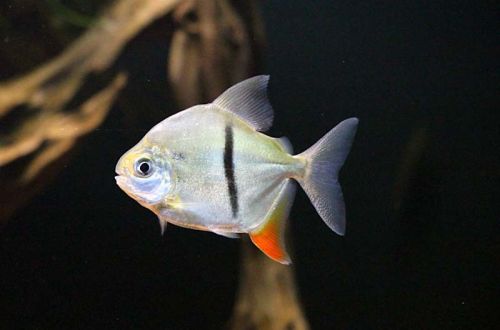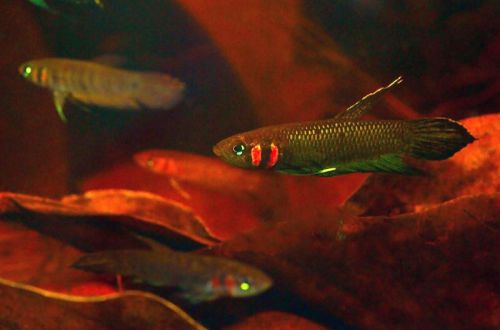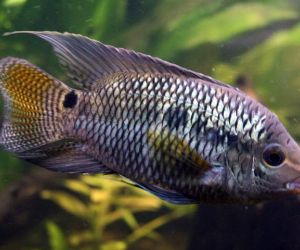
Mileus Schomburgka
Mileus Schomburgka or Mileus tape, scientific name Myloplus schomburgkii, belongs to the family Serrasalmidae (Piranidae). This herbivorous relative of the famous Piranha lives in South America in places with an abundance of aquatic vegetation and flooded snags. The natural habitat extends to the middle and lower Amazon basin, as well as the upper Orinoco basin.

Contents
Description
Adults reach an average length of up to 25 cm, although specimens over 40 cm have been recorded. The fish has a high disc-shaped body. The coloration is silvery with red tints along the edge of the body and fins. A characteristic feature is the presence of a vertical black stripe located in the middle of the body.
Brief information:
- The volume of the aquarium – from 300 liters.
- Temperature – 24-28°C
- Value pH — 6.0–7.0
- Water hardness – soft (up to 10 dH)
- Substrate type – any
- Lighting – subdued
- Brackish water – no
- Water movement – light or moderate
- The size of the fish is up to 25 cm.
- Nutrition – plant-based feed
- Temperament – peaceful
- Keeping in a group of 4-5 individuals
Maintenance and care, arrangement of the aquarium
The optimal size of an aquarium for a flock of 4-5 fish starts from 300 liters. Mileus Schomburgka are excellent swimmers and need large open swimming areas. However, in the design it is also important to provide places for shelters, for example, from natural snags (branches, tree roots).
Being a predominantly herbivorous species, most ornamental aquarium plants are likely to be eaten or badly damaged. It is recommended to use artificial substitutes, or use fast-growing plants with hard leaves, such as anubias, hornworts and others.
Keeping will require the aquarist to establish and maintain low pH and dH values. Regular replacement of part of the water with fresh water (together with soil cleaning), along with the smooth operation of the filtration system, will prevent the accumulation of excess amounts of organic waste.
Food
The basis of the diet should be plant-based feed. These can be both commercial products in the form of dry flakes and granules made on the basis of algae, vegetables and fruits, as well as pieces of cucumber, zucchini, lettuce, spinach, green peas, etc.
It is important not to limit yourself to exclusively plant products. It must be combined with regular feeds (in small quantities), for example, flakes for American cichlids containing protein components, or live or frozen brine shrimp, bloodworms should be fed periodically.
On occasion, they can eat smaller fish.
Behavior and Compatibility
A peaceful moving roar, however, as noted above, can pose a threat to small aquarium neighbors. Compatible with most other types of comparable size. Inhabits the upper and middle layers of the water, so good compatibility is achieved with bottom species, for example, among Plecostomus and Bronyakov.
Fish diseases
The most common cause of Mileus ribbon disease is an unbalanced diet. Without receiving the necessary trace elements and vitamins, the body weakens, the immune system can no longer resist infections. In the event of the first signs of illness (lethargy, refusal of food, exhaustion, etc.), it is worth paying attention to the feed supplied.
Read more about the causes, symptoms, and treatments in the Aquarium Fish Diseases section.





